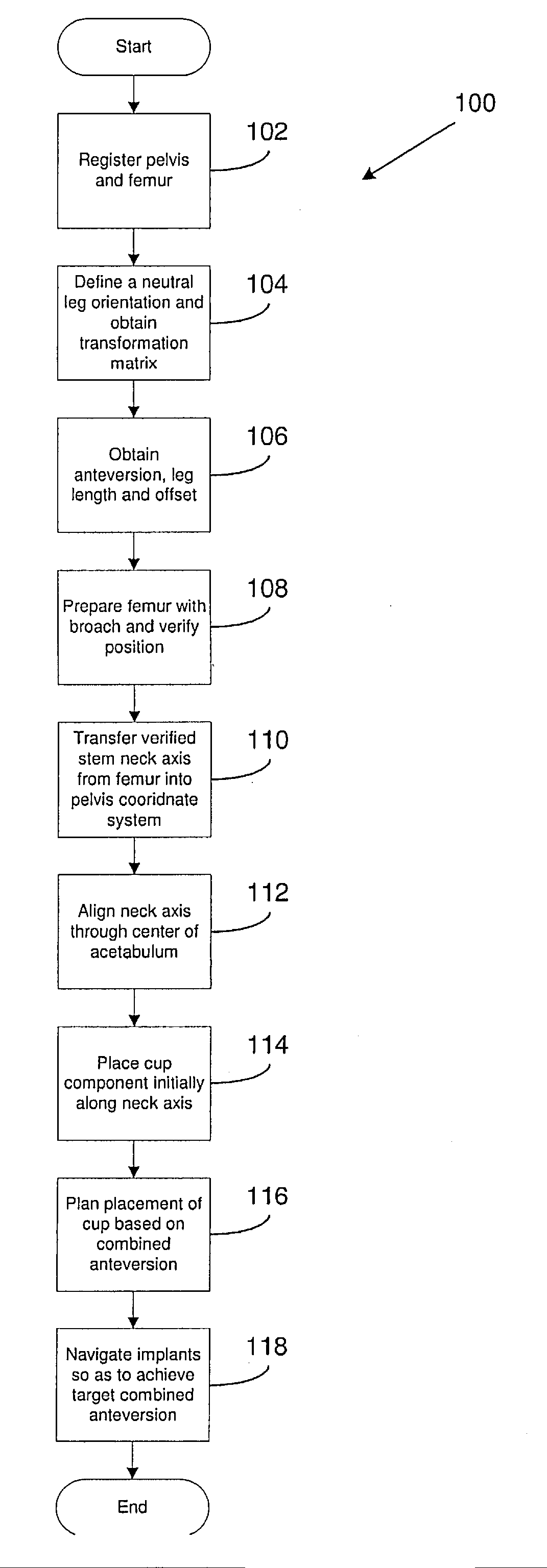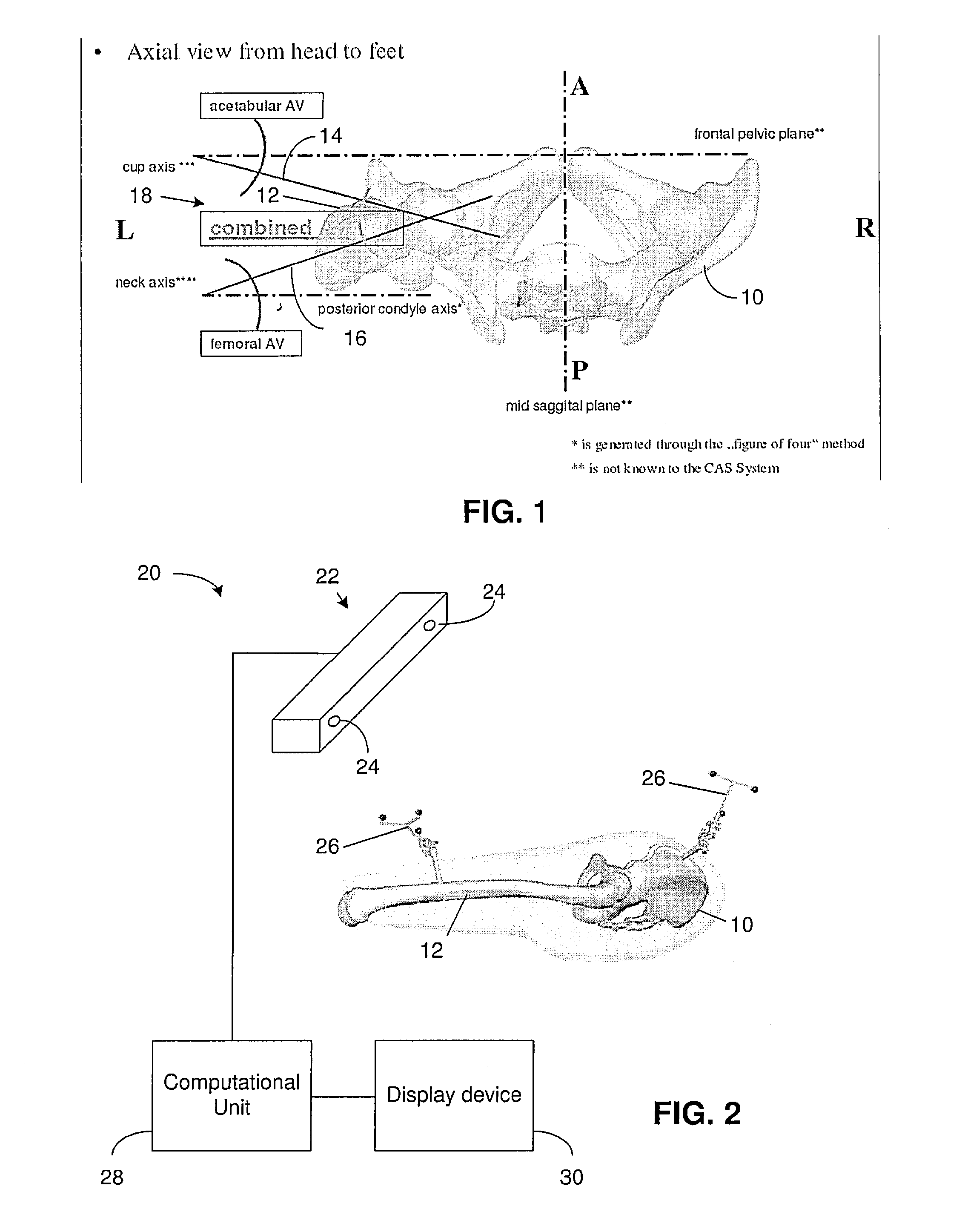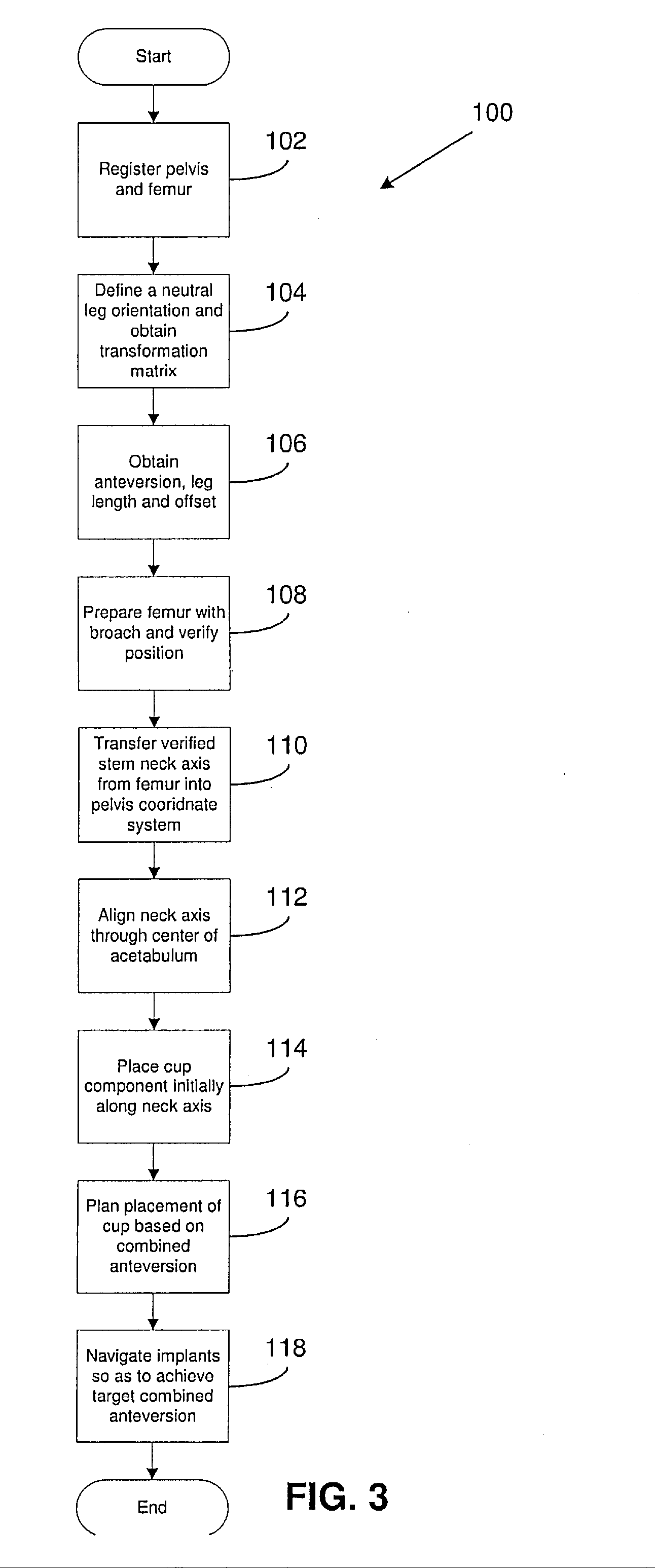Navigated placement of pelvic implant based on combined anteversion by applying ranawat's sign or via arithmetic formula
a pelvic implant and combined anteversion technology, applied in the field of hip implants, can solve the problems of inaccurate navigation systems that reference apps, methods that do not take into account personal differences in hip mechanics and stability, etc., and achieve the effect of minimizing the occurrence of impingemen
- Summary
- Abstract
- Description
- Claims
- Application Information
AI Technical Summary
Benefits of technology
Problems solved by technology
Method used
Image
Examples
Embodiment Construction
[0041]Artificial hips generally include two components; a cup that is attached to the pelvis, and a stem that is attached to the femur. The femoral stem may include a head portion coupled to an elongated stem portion via a neck portion. Conventionally, hip implants are performed by first positioning the cup, and then placing the stem in relation to the cup. A problem with this approach, however, is that the cup is free in its rotational alignments, while the stem is restricted in its rotational alignments. Thus, if there are alignment or positioning errors with the cup once it has been attached to the pelvis, there my not be sufficient positioning freedom in the stem to compensate for the mis-alignment. This can affect the overall geometry of the implanted hip joint, which can lead to impingement and possible dislocation.
[0042]The present invention enables placement of a hip implant within a patient to be planned (prior to trial fittings) such that the likelihood of impingement in t...
PUM
 Login to View More
Login to View More Abstract
Description
Claims
Application Information
 Login to View More
Login to View More - R&D
- Intellectual Property
- Life Sciences
- Materials
- Tech Scout
- Unparalleled Data Quality
- Higher Quality Content
- 60% Fewer Hallucinations
Browse by: Latest US Patents, China's latest patents, Technical Efficacy Thesaurus, Application Domain, Technology Topic, Popular Technical Reports.
© 2025 PatSnap. All rights reserved.Legal|Privacy policy|Modern Slavery Act Transparency Statement|Sitemap|About US| Contact US: help@patsnap.com



